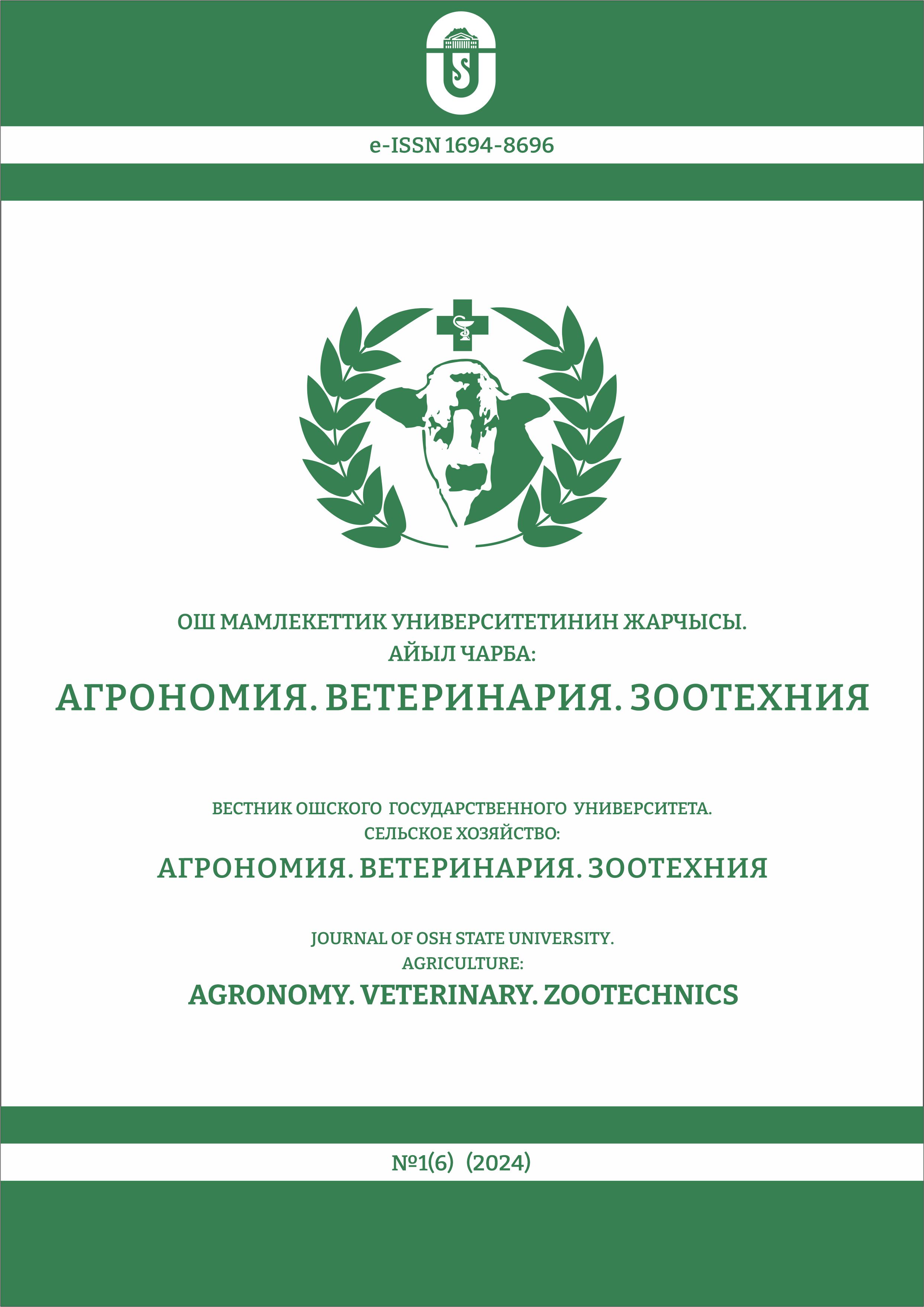FEATURES OF GROWTH AND HONEY PRODUCTIVITY OF PACKAGE BEES OF THE CARPATHIAN BREED
DOI:
https://doi.org/10.52754/16948696_2024_1(6)_26Keywords:
beekeeping, breed, yellow caucasian, carpathian, central russian, mitage of uteruses, strength of bee families, honey productivityAbstract
Objective indicators, characterizing the development of package bees regardless of their breed, are the egg bearing of the uterus, the number of grown brood and the number of working bees (strength) before the main honeyharvest. Analysis of the dynamics of the development of package bees of different breeds showed that bees of the Carpathian breed reliably outnumber these bees of The Middle Russian and Yellow Caucasian breeds. Classical methods of studying growth, used in livestock, do not give a reliable picture about the development of bee families of different breeds, because at absolute, average daily growth and relative growth rate, packet bees of the Carpathian were the worst indicators. Thus, in our opinion, objective indicators of the growth of bee families are the egg laying of the uterus, the amount of brood grown and the strength (mass) of the bee family before the main honeyharvest. These indicators may also be characteristics of bees' adaptability to specific natural and geographical conditions. The higher the figures in the bee family, the better it is adapted to the local natural conditions and the nature of the honey collection. A comprehensive assessment of the fitness of different breeds of bees is honey productivity. As the studies of the bees of the Carpathian breed on honey productivity reliably surpassed the bees of yellow Caucasian and Central Russian breeds. Consequently, the most desirable packet bees for the Orenburg region are the Carpathian bees. In addition, according to the breeding of bees this breed is rec-ommended for breeding in our area.
References
Пушкарев Н. Н., Бурцев П. Ю., Косилов В. И. (2017). Влияние генотипических и паратипических факторов на рост и медопродуктивность пчелиных семей// Современные проблемы животноводства в условиях инновационного развития отрасли: Материалы Всероссийской научно-практической конференции (23 марта 2017 г.). Курган: Изд-во ГСХА. С. 176-179.
Мишуковская Г. С., Гиниятуллин М. Г., Шелехов Д. В [и др.] (2019). Влияние пробиотических кормовых добавок на динамику гибели пчел в садковых опытах (2019) // Известия Оренбургского государственного аграрного университета. № 1 (75). С. 196-198.
Бозымов К. К., Насанбаев Е. Г., Косилов В. И. [и др.] (2016) Технология производства продуктов животноводства. Уральск: Западно-Казахстанский аграрный университет им. Жангир хана. Т. 1. 399 с.
Кубатбеков Т. С., Косилов В. И., Даминов Р. Р. [и др.] (2019). Фармакотоксикологическая характеристика энтеросорбента Экосил и его применение в ветеринарной практике. Известия Оренбургского государственного аграрного университета. № 1 (75). С. 144-147.
Морев И. А., Морев Л. Я. (2009). Изменения морфометрических признаков медоносной пчелы на Северо-Западном Кавказе// Пчеловодство. № 7. С. 20-21.
Риб Р. Д. (2010). Пакетное пчеловодство. М.: Издатель А. Р. Риб, 288 с.
Риб Р. Д. (2008). Пчеловоду России. М.: Издатель А. Р. Риб, 564 с.
Билаш Г. Д., Кривцов Н. И. (1991) Селекция пчел. М.: Агропром-издат. 304 с.
Гайдар В. (2000). Породы пчел в пакетном деле// Пчеловодство. № 2. С. 22-24.
Губин В. А. (2000). Столетняя война// Пчеловодство. № 3. С. 49-53.
Кашковский В. (2009). Племенная работа – обязательное звено Кемеровской системы// Пчеловодство. № 3. С. 8-11.
Саттаров В. Н. (2012). Породный состав горнолесной зоны Башкортостана// Пчеловодство, № 3. С. 10-12.
Самойлов К. Н. (2014). Хозяйственно-биологические признаки пакетных пчел разных пород// Актуальные направления инновационного развития животноводства и ветеринарной медицины. Уфа, С. 191-194.
Бородачёв А. Б. [и др.] (2002). Методы проведения научно-исследовательских работ в пчеловодстве. Рыбное: Гос. учреждение «Науч. - исслед. ин-т пчеловодства». 156 с.
Downloads
Published
How to Cite
Issue
Section
License
Copyright (c) 2024 Journal of Osh State University. Agriculture: agronomy, veterinary and zootechnics

This work is licensed under a Creative Commons Attribution-NonCommercial 4.0 International License.


